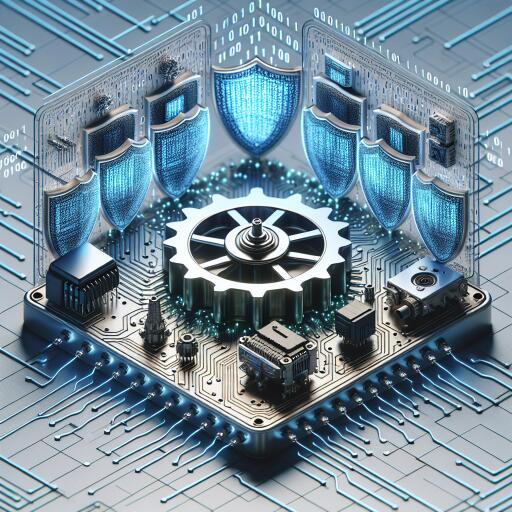Revolutionizing Safety: The Role of Process-Aware Defense in Cyber-Physical Systems
In an era where the lines between the digital and physical realms increasingly blur, the surge in interconnected devices heralds both advancements and new vulnerabilities. Cyber-physical systems (CPS) stand at the confluence of this technological evolution, integrating computing, networking, and physical processes. Yet, as CPS proliferate across sectors—power grids, transportation networks, manufacturing facilities, and beyond—their exposure to cyber threats likewise escalates. These aren’t mere data breaches; cyberattacks on CPS have the potential to inflict tangible, sometimes catastrophic, physical damage.
The cybersecurity domain is thus expanding its horizons, pivoting from traditional IT security paradigms to safeguard a world where billions of Internet of Things (IoT) devices mesh with the physical. However, the unique nature of CPS, intertwining bits and atoms, complicates the application of conventional cyber defenses. This challenge has catalyzed the development of innovative security strategies tailored for the CPS ecosystem. Enter the realm of process-aware defenses: a cutting-edge approach designed to shield the very heart of cyber-physical systems—their operational processes—from cyber sabotage.
Process-aware defense mechanisms are not a mere extension of existing cybersecurity tools. Instead, they represent a paradigm shift, focusing on monitoring and safeguarding the physical processes undergirding CPS. This shift is critical. It’s not just about guarding the gates but about ensuring the integrity of what happens inside. To do this effectively, a new breed of defense strategies is emerging, ones that are attuned to the rhythms and flows of physical processes, vigilant against any signs of digital tampering that could spell disaster.
At the forefront of this innovative approach is a methodology that’s both nimble and sharp—model-free and data-driven. This approach is particularly suited to the dynamic, complex world of CPS, where predefined models often fall short. Its strength lies in its ability to monitor physical processes in real-time, identifying and flagging unusual patterns or activities that could indicate a cybersecurity threat. Without the need for detailed, system-specific specifications, this model-free method offers a lightweight, flexible solution adaptable to a wide array of CPS contexts, from industrial manufacturing lines to smart city infrastructure.
The implementation of such process-aware defenses underscores their potential in fortifying cyber-physical systems. By situating these security measures directly within the operational flow of CPS, they offer a layer of protection that is both intrinsic and robust. Early testing and real-world applications suggest that these defenses can significantly mitigate the risk of cyberattacks, preserving the functionality and safety of critical infrastructures. Moreover, the development and deployment of these strategies highlight their feasibility and effectiveness, pointing to a future where CPS can operate with greater resilience against the cyber threats that loom ever larger in our interconnected world.
Yet, as with any emerging technology, the path to widespread adoption of process-aware defenses in CPS is fraught with challenges. From technical hurdles to the need for industry-wide standards, the journey ahead is complex. Nonetheless, the early success of these mechanisms in various settings illuminates a promising path forward—one where cyber-physical systems can not only defend against digital intruders but can do so in a way that is deeply integrated with their physical realities.
In conclusion, as the fabric of our physical infrastructure becomes ever more intertwined with digital threads, safeguarding the resultant cyber-physical systems becomes paramount. Process-aware defenses emerge as a beacon of hope in this quest, offering a tailored, effective shield against cyber sabotage. By embracing these proactive, nuanced defense mechanisms, the promise of a secure, interconnected world moves closer to reality—a world where the seamless integration of bits and atoms enhances both our digital and physical lives.










